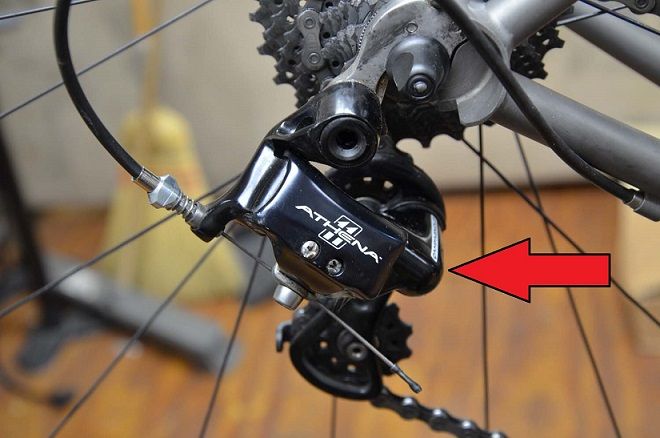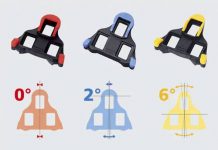The gear system on your bike maximizes your pedalling efficiency. It gives you a mechanical advantage when tackling hills or headwinds and can amplify your power when you want to go all out. But, a skipping chain can kill a climb or ruin a friendly town-line sprint.
Poorly tuned gears can rob you of your energy and make a ride tougher. A few simple steps before you head out can ensure your derailleurs are lined up and working as they were designed to.
Adjusting the rear derailleur
Shift to the big chainring and big cog, then loosen the rear derailleur’s cable clamp.
Set the inner limit–or how far the derailleur can travel toward the spokes. Look at the derailleur from the rear. Lightly pushing the derailleur toward the spokes by hand, be sure the derailleur pulleys line up directly underneath the largest cog. If not, turn the inner-limit screw (usually the one highest or furthest to the rear) in or out until the pulleys are centered. (You can watch it move as you turn the screw, while continuing to apply hand pressure to the derailleur.) Be sure the inner-limit screw is set so that the rear derailleur cannot contact the spokes.
Set the outer limit-or how far the derailleur travels away from the spokes. With the cable still unattached, pedal the bike in the workstand–it should shift to the smallest cog/largest chainring combo. The pulleys should line up directly beneath the smallest cog. If not, adjust the outer-limit screw.
With the drivetrain in the big chainring/smallest cog combo, turn the barrel adjuster (located where the cable enters the rear derailleur) in completely, then back it out one full turn and reattach the cable to the derailleur, pulling it taut to remove all slack. While pedaling the bike, click up one cog. If the chain moves to the next cog but hesitates or clatters, turn the barrel adjuster out (counterclockwise) one quarter turn. Shift back down, then shift up again and try another quarter-turn. Repeat until the shift is smooth.
If the chain doesn’t move to the next cog at all the first time you shift, adjust cable tension: Return to the smallest cog, loosen the cable anchor bolt, turn the barrel adjuster all the way in then back it out one complete rotation, pull the cable taut with your fingers and retighten the anchor bolt.
Tune the shifting with the barrel adjuster. If the chain misshifts when you go to larger cogs, turn the adjuster outward (counterclockwise). If it misshifts going to smaller cogs, turn the adjuster in (clockwise).
Routine cleaning and lubing. Grit on the outside of the derailleur can work its way into the moving parts, causing premature wear–which creates slop in the derailleur’s movement and leads to lousy shifting.
Leave the derailleur on the bike to clean it. Use a brush (an old toothbrush is fine) and solvent to scrub away the funk. Let the derailleur dry for 10-15 minutes, then lube the pivots–any part of the derailleur that moves. Some cyclists like to lube the pulley bushings, but others think it attracts a lot of grime without adding much performance. Make your call, then defend your position like a zealot. Wipe off excess lube.
Adjusting the front derailleur
A front derailleur must be aligned properly to be effective. Ensure the outer side of the cage is parallel to the chainrings. Also, make sure the bottom edge of the outer cage sits 2 to 3 mm above the top of the teeth on the big ring.
Once the position is good, shift into the smallest chainring to check your inner limit screw. The inner side of the cage should be close to, but not touching the chain, with about 1 to 2 mm of clearance. Next, make sure there is no excess cable slack. Pull it snug, but not too tight, if required.
Now shift the rear derailleur into the smallest cog and the front derailleur onto the largest chainring. The outer side of the front derailleur cage should be 1 to 2 mm from the chain. If the chain is rubbing the outer cage, try to over shift. If the rubbing stops while doing this action, you need to increase the cable tension by returning to the small chainring and pulling the cable tighter, or by using an in-line barrel adjuster if you have one.
If you over shift and the rubbing doesn’t go away, then the outer limit screw is too tight and needs to be loosened (counter-clockwise) until the rubbing stops. If the setup is done correctly, and you have a middle chainring, there should be no need for further adjustment as it will be set from the work you did on the inner and outer chainrings.














